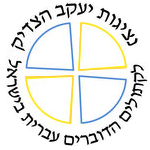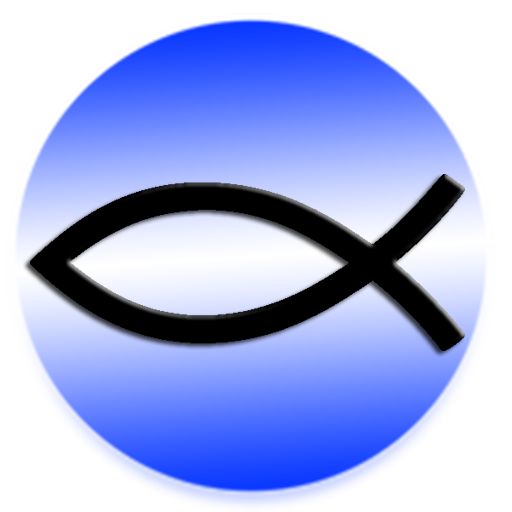New book on the life of a friend of the kehillot
Paul-Samuel Auszenkier lives in France but at the end of the fifties and the beginning of the sixties he was a member of the Catholic Hebrew speaking communities in Israel and since that time has kept up a friendship with us. We celebrate with him the important event of the publication of the story of his life titled "Faire mémoire" (Remembering). The author has determined that the proceeds of this book will be contributed to our Hebrew speaking communities in Israel..
 Paul-Samuel is known to many of us as Samy and in the book that was published by the well-known Parisian publishing house Cerf he tells the story of his life in a series of interviews with Christine Rater-Garcette, a literary genre that is quite common in France. The result is a fascinating and readable book. The story stretches over the past eight decades and moves from Poland to France with an important stop in Israel at the end of the fifties and the beginning of the sixties.
Paul-Samuel is known to many of us as Samy and in the book that was published by the well-known Parisian publishing house Cerf he tells the story of his life in a series of interviews with Christine Rater-Garcette, a literary genre that is quite common in France. The result is a fascinating and readable book. The story stretches over the past eight decades and moves from Poland to France with an important stop in Israel at the end of the fifties and the beginning of the sixties.On the first page of his story, Samy was asked: "Why did you produce this book?" And he replied: "Today I am eighty four years old and I have reached the stage in my life when I want to tell about what I have lived through and who I am in truth. It is not a simple thing to say who one is, without fearing what my family or my Jewish friends might think" (p. 17).
Samy was born to an observant Jewish family in 1924 in the town of Lodz in Poland and he lived his childhood years in the town of Zopot, near Danzig. His father worked in Danzig, which was under German rule at the time that the Nazis took power. Two of his sisters immigrated to Palestine in those years but the family decided to move to France and took up residence in Paris in 1934. For young Samy this was a time of passing over from one culture to a different one, from one language to another. Until that time Samy spoke Yiddish in his family and at school he had to learn French and to get used to the new life in France. The War and the Nazi occupation of France brought new changes to the life of the family. Samy left Paris and moved to southern France, outside of the area that was under direct Nazi occupation.
It was there, during a spell in hospital, that Samy got to know a nun by the bame of Sister Jean-Gabriel of the Sisters of Saint Vincent de Paul. He was very impressed by her devotion and he asked her why she was also taking care of Jews. Her response surprised him: "Jesus was a Jew and so was his mother". She gave him a New Testament to read and there he discovered things that had to do almost only with the Jewish people. After a few days of conversations with the hospital chaplain, Samy wrote to his parents, who had stayed in Paris, that he wanted to be a Christian. He was baptized by the Bishop of Montauban on September 27, 1942. Samy lost contact with his family in Paris and after the war learnt that his sister had died at Auschwitz and that his parents had found refuge. Samy decided to cross the border into Spain and there he was arrested and spent a few months in prison. From Spain, after his release from prison, he found his way to Morocco and there joined the Foreign Legion of the French army and had the privilege of participating in the liberation of Paris. After searching for his family he found his parents, but his father died shortly afterwards and in 1948 his mother immigrated to Israel to join his sisters who were there.
An entire fascinating chapter in his book is dedicated to tell the story of the "Maison d'Ananie", founded by Father Altermann, he too a Jew who had been baptized and had become a priest. The house was for people preparing to be baptized, where they could study Christianity. A small community lived in the House and Samy joined them and got to know there Jacques Maritain, the renowned French thinker and writer, and his Jewish wife, Raissa. Samy stayed in this house with a few breaks until he made the decision to immigrate to Israel.
Samy arrived at the port in Haifa in 1958. At first he lived with his family on the Ramat Kovesh kibbutz, not far from Tel Aviv. After a short time, Samy found the Hebrew speaking Catholic community in Jaffa and he met there with Father Bruno Hussar. He began working in the offices of Air France in Israel and in 1959 he met his future wife, Rachel, she too a Catholic from a Jewish family. The description of life in the Hebrew speaking Catholic communities at the end of the 1950s reflects a situation that was not without difficulty: "We were not many and we were very isolated. The Hebrew speaking community was then at its beginnings and had not yet received official recognition. We had the feeling that all the initial teething problems were on our shoulders. In France, during the War, I was the Jew that had to be eliminated. In Israel I was the baptized Jew who could not be accepted. In that period, in Israel, one could be a Buddhist, a Communist, anything at all, but not a Catholic. It was still too close to the Shoah" (p. 91). In Israel, two sons were born to Samy and Rachel before they decided to return to France in 1964.
The book includes chapters about Jewish-Christian relations, about the Charismatic renewal in the Catholic Church, and Samy's friendship with Jean-Marie Lustiger, who later became Cardinal Archbishop of Paris and was himself of Polish Jewish origin. The penultimate chapter tells the story of the founding of the group "Myriam Bat Tsiyon" in 1981, which contains its meetings in Paris until today. An important part of the activities of the group is the celebration of the mass on Saturdays, a sign of the link with the Jewish people, and a part of the prayer is said in Hebrew. Samy also emphasizes the link between him personally and the "Myriam Bat Tsiyon" group with the Hebrew speaking Catholic communities in Israel. In a few pages he recounts the development of the Hebrew speaking Catholic communities in Israel, from their establishment in 1955 until the ordination of Father Jean-Baptiste Gourion as bishop in 2003. He also describes our activities in Israel.
The interviewer asks Samy at the end of chapter 11: "What does it mean for you to have the mass celebrated in Hebrew?" He responds: "When I pray in Hebrew a feel a greater proximity to the first Christian communities. I even try to pray the Psalms in Hebrew just as Jesus did. It is said that language is an important component of identity: for me, speaking Hebrew makes me more conscious of being Jewish… It is a grace to pray the Bible in Hebrew and for that reason many Christians want to learn Hebrew" (p. 134).
 At the end of this fascinating book, Samy says: "When I reread my life I do not know to what vocation I was truly called. I sense that I have lived many lives that are joined by a common thread, the hand of God, which has pushed me onwards, without me even being aware sometimes, through the events and the encounters I have lived' (p. 139).
At the end of this fascinating book, Samy says: "When I reread my life I do not know to what vocation I was truly called. I sense that I have lived many lives that are joined by a common thread, the hand of God, which has pushed me onwards, without me even being aware sometimes, through the events and the encounters I have lived' (p. 139).Samy has assured us that we will have a few copies of his book available for those who are interested. Please contact Father David if you are interested.
Samy and Marie-Esther, Carmelite in Nazareth











 Meeting of Priests in Tiberias
Meeting of Priests in Tiberias Interview with Fr. Benny for Magdala YouTube Channel
Interview with Fr. Benny for Magdala YouTube Channel Farewell of Monika Faes in Austria
Farewell of Monika Faes in Austria Lent Retreat 2024
Lent Retreat 2024 Lent Walk with the Cross
Lent Walk with the Cross Booklet for Lent 2024
Booklet for Lent 2024 Priests of St. James Pray in Bethlehem
Priests of St. James Pray in Bethlehem